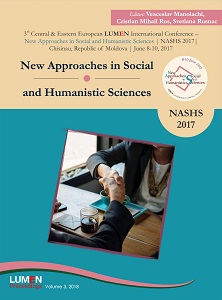Mediating Teaming and Design Thinking: Project Management in Architecture
Mediating Teaming and Design Thinking: Project Management in Architecture
Author(s): Cristian Bănică, Marina Mihaila
Subject(s): Essay|Book Review |Scientific Life
Published by: Editura Lumen, Asociatia Lumen
Keywords: Architecture; project design; teaming; Project Management; research by design.
Summary/Abstract: Designing teams is quite important besides the dedication of the specialists’ team to the design thinking creativity, knowing that results to achieve and reality to build are not the only weights to balance. More, selecting a team is a matter of drafting the project design and following the rules with creativity, and finally, reaching objectives and managing results for the future. Dedication to necessary (professional) specialties is a criterion for first selection. The next criteria are related to the quick understanding of design, innovation and/or customization, speed and difficulties to meet. Designing a building, a project or a research is not very different in architecture field. Each focuses on several successive phases: defining the inputs and correlated contexts; pre-designing the targets-final products and their nature; forming the best team according to best expectations; planning the design. Since planning the design and the design itself are two products that are the dedicated work of the design leader/and PM, the team has to relate to the sense of conceptual, concrete and knowledge contents. The value of the design -understood as its planning as well as drafting- resides in the nature of advanced design thinking. Also the quality of the team derives from pairing specialties/specialists, co-working and the value of collaborative added value to the initial design theme. Mediating the two – teaming and design thinking- as components of performance in Project Management could lead to best/better architectural results, by testing the partial deliverables in reformatting drafting, communication, expectations and long terms maintenance. In parallel it might lead to decreasing the conflicts and saving time in manufacturing and scheduling the processes in between by oriented common targets. The points of convergence and divergence between practice, theory and architectural inquiries will be highlighted within extended article
Book: New Approaches in Social and Humanistic Sciences - NASHS 2017
- Page Range: 94-102
- Page Count: 9
- Publication Year: 2018
- Language: English
- Content File-PDF

